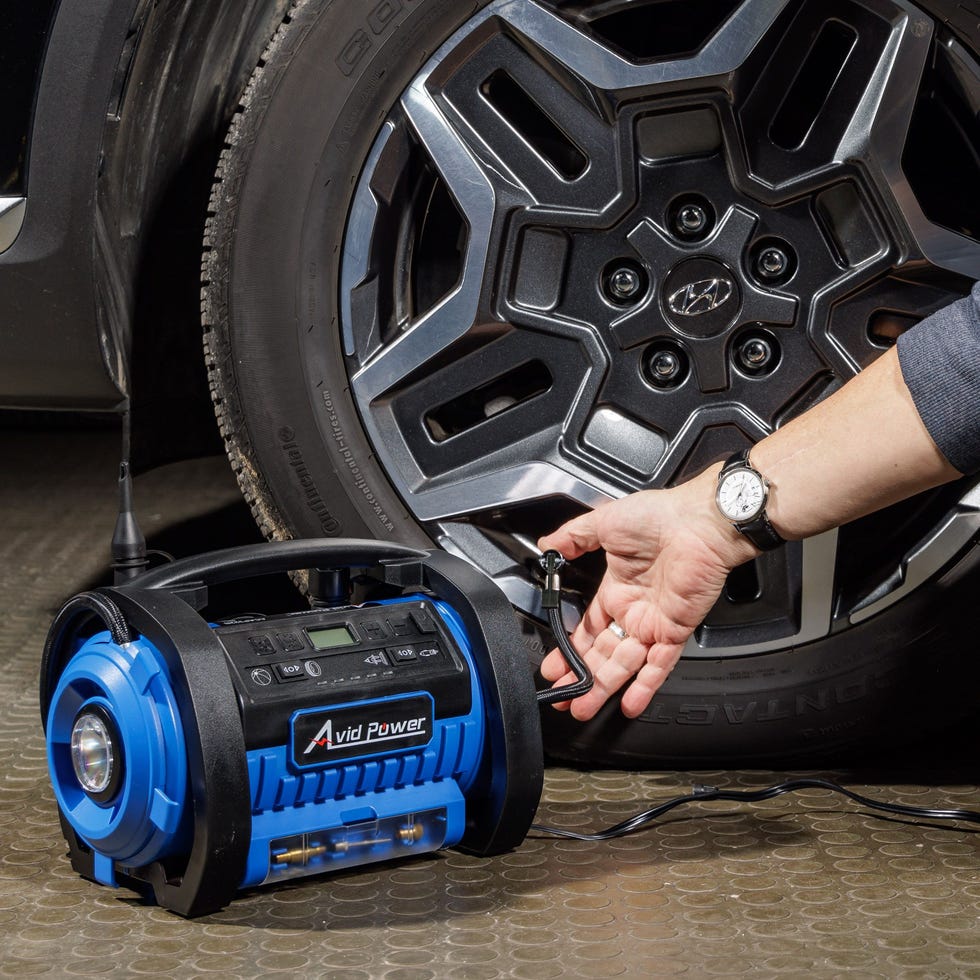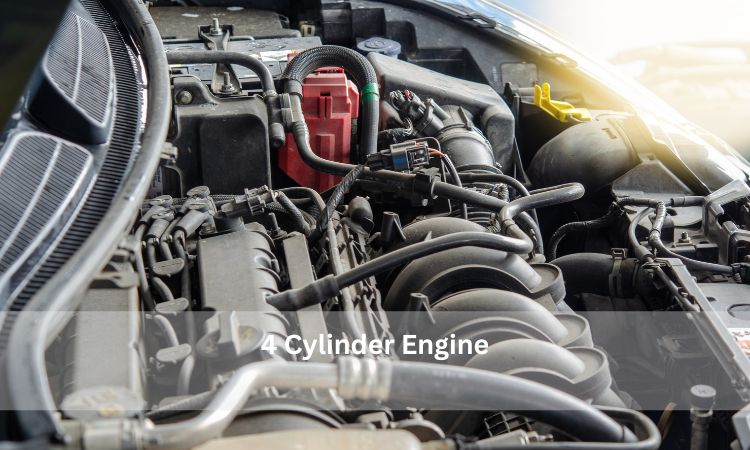How to Use Car Tire Pump
To use a car tire pump, attach the hose to the valve stem and pump air. Ensuring your car tires are properly inflated is crucial for safety and performance on the road.
Using a tire pump can help you maintain the correct tire pressure easily and conveniently. Whether you’re topping up the air in your tires before a long drive or dealing with a sudden flat, knowing how to use a car tire pump effectively is a valuable skill for every driver.
In this guide, we will go over the step-by-step process of how to use a car tire pump properly and offer tips for getting the most out of this essential tool. By following these instructions, you can keep your tires in top condition and ensure a smooth and safe driving experience.

Credit: www.caranddriver.com
Choosing The Right Car Tire Pump
When it comes to maintaining your car’s tires, having a reliable tire pump is essential. Choosing the right car tire pump can make a significant difference in your vehicle’s performance and safety. Consider your needs, the types of tire pumps available, and other important factors to ensure you make the best choice for your car.
Consider Your Needs
Before selecting a car tire pump, consider your specific requirements. Assess whether you need a portable pump for emergency use or one with advanced features for regular tire maintenance. Determine the desired pressure range and compatibility with your vehicle’s tires. Evaluate the available storage space in your car and how frequently you plan to use the pump. Taking these factors into account will help you narrow down your options and choose the most suitable tire pump.
Types Of Tire Pumps
There are several types of tire pumps available, each with its own advantages and limitations. Familiarize yourself with the common options, such as handheld pumps, 12V inflators, and compressor-style pumps. Understand the power source required for each type and whether it aligns with your preferences. Compare the inflation speed, accuracy, and extra features offered by different pumps to make an informed decision. Take into consideration the ease of use, durability, and overall performance of each type when deciding which car tire pump is right for you.
Preparing Your Car Tire
1. Use a tire pressure gauge to measure the current pressure.
2. Refer to your car’s manual for recommended tire pressure.
3. Inflate or deflate the tire as needed to reach the correct pressure.
1. Locate the valve stem on the tire.
2. Unscrew the valve cap by turning it counterclockwise.
3. Set the cap aside in a safe place to avoid losing it.
Using The Car Tire Pump
Using the Car Tire Pump helps in maintaining proper tire pressure for a safe driving experience.
Attaching The Pump To The Tire
Follow these simple steps to attach the pump to the tire effectively:
- Locate the valve stem on the tire.
- Remove the valve cap and set it aside.
- Attach the nozzle of the pump securely onto the valve stem.
- Ensure a tight fit to prevent air leakage.
Inflate The Tire
Now, let’s inflate the tire to the recommended pressure level:
- Turn on the pump and monitor the pressure gauge.
- Add air in short bursts, periodically checking the pressure.
- Stop inflating once the pressure reaches the required level.
- Detach the pump nozzle and securely place back the valve cap.
Monitoring The Tire Pressure
When it comes to using a car tire pump, monitoring the tire pressure is crucial to ensure your vehicle runs smoothly and safely. Proper tire pressure not only improves fuel efficiency but also enhances the overall performance of your car. Here’s how you can monitor the tire pressure effectively.
Use Tire Pressure Gauge
Start by using a tire pressure gauge to measure the current pressure in each tire. Insert the gauge into the valve stem and press down firmly to get an accurate reading of the pressure.
Check For Correct Pressure
Once you have the readings from the gauge, compare them to the recommended pressure levels provided by the car manufacturer. Ensure that the pressure matches the recommended range outlined in the owner’s manual or on the sticker located inside the driver’s side door jamb.
“` By using a structured approach and incorporating HTML syntax, you can effectively guide users through the process of monitoring tire pressure using a tire pump. This not only enhances user readability but also improves search engine optimization by following best practices.Storing The Tire Pump
Proper storage of your car tire pump is essential for its longevity. Keep it in a dry area, away from extreme temperatures and direct sunlight, to ensure it remains in good working condition for when you need it.
Protective Case
When it comes to storing your car tire pump, it is essential to invest in a suitable protective case. This will help keep your tire pump safe from any potential damage, such as dust, moisture, or accidental knocks.
The protective case should be durable and preferably made of a material that can withstand rough handling. Ensure that the case is a good fit for your tire pump, providing enough space for it to be stored securely. A well-fitted case will prevent the pump from moving around and getting damaged during transportation.
Proper Storage
Proper storage of your car tire pump is crucial for its functionality and lifespan. When not in use, make sure to store the pump in a clean and dry area to avoid any corrosion or rusting. A garage or storage space that is protected from excessive heat, cold, or moisture is ideal.
Ensure that the pump is placed in an upright position to avoid any oil leakage or damage to sensitive components. Storing the tire pump upright also helps prevent dust or debris from entering the valve or air intake, maintaining its efficiency.
Remember to detach any additional attachments from the pump before storing it. This will prevent any loss or damage to these accessories and ensure that they are ready for use when needed.
If your tire pump is battery-powered, remember to remove the batteries before storing it. This will prevent any leakage or corrosion that could potentially damage the pump or render it unusable.
Consider using a hanging storage solution, such as hooks or brackets, to keep the tire pump off the ground. This will help maximize space and keep the pump easily accessible when required. Additionally, storing the pump off the ground can protect it from any accidental damage that might occur if it is knocked over or stepped on.
By following these simple steps for proper storage, you can ensure that your car tire pump remains in optimal condition and ready to use whenever you need it.

Credit: m.youtube.com

Credit: kensun.com
Frequently Asked Questions For How To Use Car Tire Pump
How Do You Use An Air Pump On A Car Tire?
To use an air pump on a car tire, first, remove the valve cap. Attach the air pump nozzle securely to the valve stem. Turn on the pump and fill the tire to the recommended PSI. Check the pressure with a gauge and adjust as needed.
Finally, replace the valve cap.
How Do You Use A Tire Pump At A Gas Station?
To use a tire pump at a gas station, locate the air pump, unscrew valve cap, attach nozzle securely, set desired pressure, inflate, and regularly check pressure for appropriate level.
How Do You Use An Air Inflator In A Car?
To use an air inflator in a car, plug it into the power outlet, attach the hose to the tire valve, set the desired pressure, and turn it on. Check the pressure gauge and adjust if needed. Disconnect the inflator and replace the valve cap.
How Do I Pump My Car Tires?
To pump your car tires, locate a gas station with an air pump. Remove the valve cap and attach the air hose. Set the desired pressure and fill the tire. Check pressure with a gauge and inflate or deflate as necessary.
Replace valve cap when finished.
How Do You Use A Car Tire Pump Efficiently?
To use a car tire pump efficiently, make sure to attach the pump to the tire valve tightly and pump air until the desired pressure is reached.
What Steps Should I Follow While Inflating My Car Tire?
To inflate your car tire, start by removing the valve cap, attaching the pump nozzle to the valve, pumping air until the desired pressure is achieved, and finally, resealing the valve cap.
Is It Necessary To Check The Tire Pressure Before Using A Pump?
Yes, it is crucial to check the tire pressure before using a pump to ensure the correct amount of air is added and prevent over-inflation or under-inflation.
Conclusion
Learning how to use a car tire pump is essential for every vehicle owner. By following the step-by-step instructions mentioned in this guide, you can effectively maintain your car’s tire pressure and ensure a smooth driving experience. Regularly checking and inflating your tires will not only improve fuel efficiency, but also enhance safety on the road.
Mastering the art of using a tire pump will not only save you time and money, but also increase the lifespan of your car’s tires. So, take the time to learn and practice these skills, and enjoy a hassle-free driving experience.


